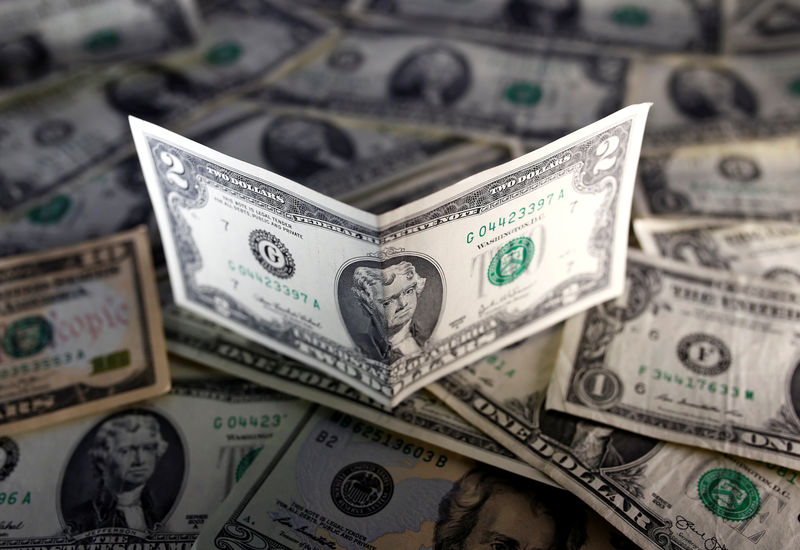By Gina Lee
Investing.com – The dollar was down on Friday morning in Asia but was still hovering near four-month highs as positive U.S. economic data, COVID-19 vaccine rollouts and rising Treasury yields all continued to cap the U.S. currency’s losses.
The U.S. Dollar Index that tracks the greenback against a basket of other currencies edged down 0.13% to 92.790 by 9:47 PM ET (1:47 AM GMT).
The USD/JPY pair inched up 0.05% to 109.33, its highest level since June 2020.
The AUD/USD pair was up 0.31% to 0.7602 and the NZD/USD pair was up 0.32% to 0.6971. The Antipodean risk currencies recovered from their losses earlier in the week and are likely to remain supported because of the two countries' success in limiting the economic fallout from COVID-19, according to some investors.
The USD/CNY pair inched down 0.04% to 6.5423. The GBP/USD pair edged up 0.16% to 1.3754, with the U.K. to release retail sales figures for February later in the day.
The euro fell against the dollar to $1.1776, the strongest for the greenback since November 2020. Investor sentiment for the single currency has weakened thanks to fresh lockdowns and delays in the COVID-19 vaccine rollout across the continent.
Although Germany releases its March Ifo Business Climate Index later in the day, which is expected to show improved business morale, it is unlikely to stop the euro’s fall. The slow vaccine rollout and disputes with the U.K. over vaccine exports remain dominant themes for now, according to other investors.
There were warnings, however, against chasing the dollar higher from current levels from some corners over worries that the dollar’s gains over the past few weeks have been too rapid.
"The euro has broken through the 200-day moving average, and that is a clear sign that it will continue to go lower... the yen is getting strong on some of the crosses, which will cap dollar/yen. Yields have supported the dollar, but this move could start to run out of steam," MUFG Bank head of global markets research Minori Uchida told Reuters.
In the U.S., the number of initial jobless claims for the week fell to a one-year low of 684,000 from the 781,000 claims filed during the previous week. The number was also down from the 730,000 claims in forecasts prepared by Investing.com.
Further data, including personal spending in February, is due later in the day and could provide further hints about the U.S. economic strength.
President Joe Biden also pledged to double the U.S. vaccination rollout plan after reaching the previously set goal of 100 million shots 42 days ahead of schedule.
